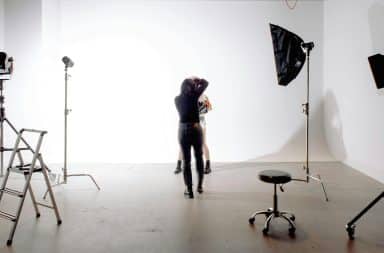As always in our publication, History Weekly (with the small exception of every issue but this one), we bring our readers an unbiased and scholarly account of the invention of several of what are now life’s little essentials. From the toaster to the telephone, the basket to the baboon (famously invented by mixing helium and carbon in 1857), no stone shall be left unturned except where applicable by law and in the state of Puerto Rico; or otherwise, wherever Shakespeare’s adage that “The laydee spake words fayre, yet moved not her stocke, even for front rowe ticketse” may be applied.
This week, our esteemed guest historian J.D. Hillstone (BA Florida State University 1964, MB McGill University 1969, MA Concordia University 1972, NBC every MON from 9:00 PM EST) will guide us through the long and difficult waltz that is the genesis of the clothespin: From its humble beginnings in rural Austria to its far-reaching success in Western Europe, Western Africa, and, by misunderstanding, in several western omelettes, the clothespin has undergone change unthinkable by anyone except perhaps the US Mint, but not unless you buy something, and I don’t break fifties.
In his popular oeuvre, The Clothespin: History on the Line, Hillstone writes, “Whether or not clothing would have become the success it did is perhaps more due to the easy care of the clothes themselves than to Miss Edna Goode of Little Rock, despite past historical evidence to the contrary.” Then a radical new historian, both Hillstone and his book, which he ambitiously published in 1910 several years before his birth, were cast out of academic circles, then out of social circles, and then out of circles at large, forced to live without the geometric shape for many years, but benefiting greatly from square meals.
“Medieval Austria was the optimal combination of geography, societal conditions, and hotsauce to foster the invention of the clothespin in 1034, it’s de-invention in 1037, and re-invention in 1040, as well as lots of time for errand-running in between.” Exhibiting the critical eye for detail readers have come to expect from him, Hillstone cautions, “Of course, the reader will understand that it was not until 1041, with the discovery of the clotheslines in ancient Egyptian tombs that the use of clothespins was inferred to. Prior to 1041,” he writes, “clothespins were used to fasten loose closures in garments, keep sewing material together, and restrict the breathing of unpleasant dinner company.”However, close to five decades after the publication of Hillstone’s book, it was picked up by producers and turned into an overnight cinematic success, then by a magician and placed into a hat, tapped twice, and turned into a rabbit and a set of silverware. Since the lucky break, Hillstone says, he has “never looked back, I’ve got such a crick in my neck!”
The eminent art historian J. B. Boodwecker (also known as Mary Dolores Andrews) agrees with Hillstone’s dating. “Just look at these plates,” he told History Weekly in his Cote St-Luc 2 ½, “here’s one showing a woman using clothespins to debate whether God is actually benevolent or just playing cute. Here’s another one showing a carpenter and his apprentice coming to blows about which was the proper way to carve a clothespin—notice how they aren’t yet using sharpened bullfinches to do the job.”
It is, Hillstone claims, the humble Grete Jungsten from the city of Bad Godesburg, then known as Milan and informally as Larry, now current-day Healthy Noodle Thai Cooking, who can be credited with the first clothespin. A literate woman who could also read, Jungsten wrote of her tribulations, often using words: “Iohannes needs his clothes to be dry, but refuses to get out of the water with them on. After draining the water out of the Danube (Author: then in the King of Sicily’s pocket) with a straw, I am now faced with the dilemma of drying his clothes, which are soaking wet and causing a scene in front of the neighbors, not that they don’t have their own ways, but who am I to judge, with what I married?”
After using string, her fingers, and the entire cast of Amadeus to hold the clothing to a thin branch outside her 1964 Winnebago, Grete turned to the clothespin as the perfect alternative. Asking her husband to get out of his clothes, as he was making them difficult to lift, Grete attached the clothing to the branch via the clothespin, and history was made. The second prototype, which was 6 feet shorter that the first and not made of beaver skin, caught on at an alarming rate in Central and Western Europe, so much so that for decades, immunization shots were mandatory for infants over the age of 60.
From there, Hillstone tells me as we walk onto the golf course, tennis racquets in hand, that selling the clothespin idea was child’s play. When asked why it is that dry clothes are so preferable to wet, Hillstone waxes poetic: “Why is anything better than anything else? How the hell should I know? Jesus, would you serve, it’s your turn.”
Hitting the volleyball back to the eminent genius and checking mate, this lowly reporter was for the first time struck by the mastery of the true storyteller (first mistaken for Halley’s Comet). “Besides,” Hillstone adds, a smirk playing on his lips, and also at the Saidye Bronfman Center May 13-18, “how else can slacks look really good? I mean, really good.” Packing his fencing foil in its case and tallying up our score (two perfect strikes for me, three for Hillstone), Hillstone shakes my hand and just as soon as it began, our interview is over.
What can readers of History Weekly take away from our investigation of the clothespin’s humble origins? Not the pillowcases, because they’re monogrammed anyways, and those aren’t your initials. If anything, the clothespin extends beyond the surface of clothing, housechores, and what it means to be considered “really peachy keen” and touches the core, to the very essence of man’s desire to fit in. On a global level, the clothespin evidences the emergence of feminism from unlikely suburbs in Medieval Europe, liberating women from the task of holding wet clothes outside for hours on end and reciting “Ode to the West Wind” until they dried.
Next week in History Weekly’s review series: The stamp viewed as an allegory for Plato’s Allegory of the Cave as interpreted by Harvey C. Major as impersonated by my cousin, Artie.
By Rebecca Ugolini


